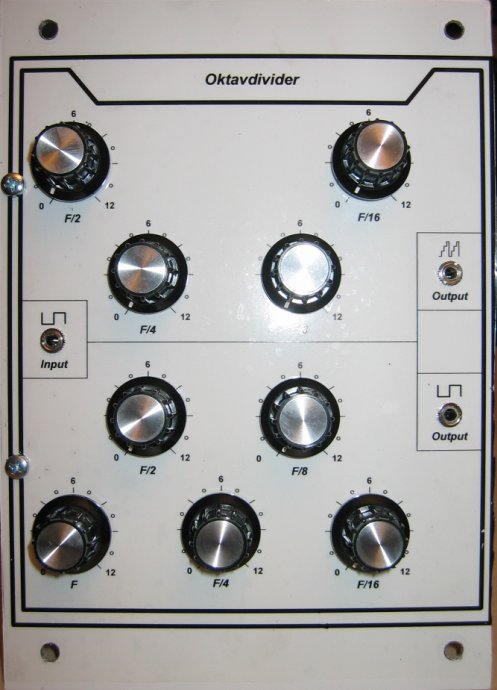
Intro:
This type of circuit belongs originally to organ technology. It creates sub octaves from a square input signal by dividing it by 2, 4, 8 and 16 and mixes the result to saw / staircase outputs via resistor matrices or to a mixture of output square signals.
The results can be quite fat sound clusters.
Frontend:
A square wave signal at the input connector is transferred to the divider circuit.
The module creates a set of saw outputs (better to say staircase signals) on the one hand and the divided square waves on the other hand. Each result set is provided at the corresponding output connector.
All sub octave parts of the output signals can be mixed / added by their F/x pots.
Circuit:
The circuit is based on a simple binary divider CMOS 4024. The input signal is level shifted by two transistors to let the divider work properly. The divider is followed by a set of resistor matrices to create the staircase outputs and by the output stage realized with a NE5532 dual opamp. The circuit can be obtained from the book MSS2000 by Hajo Helmstedt.
Board of the Oktavdivider module:
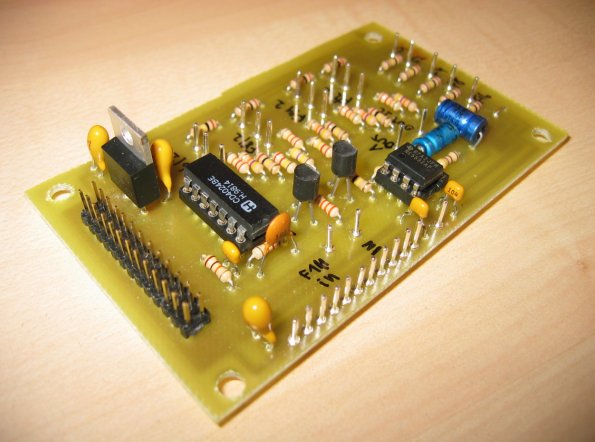
Complete Module:
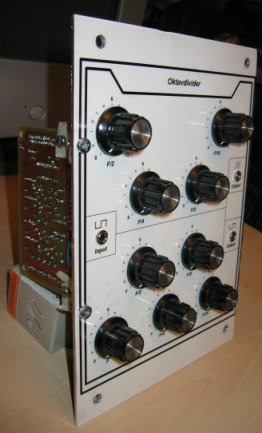
Output signals of the module:
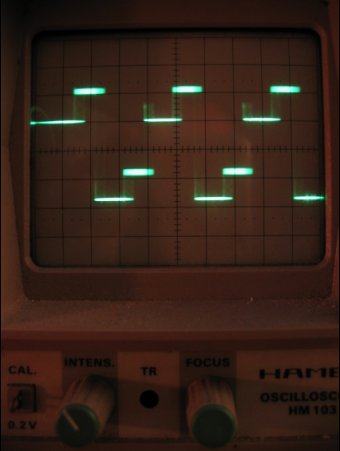
Staircase F/2
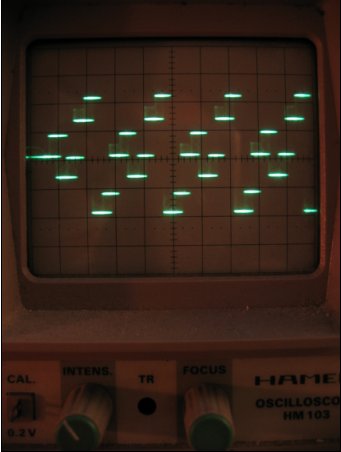
Staircase F/2 + F/4
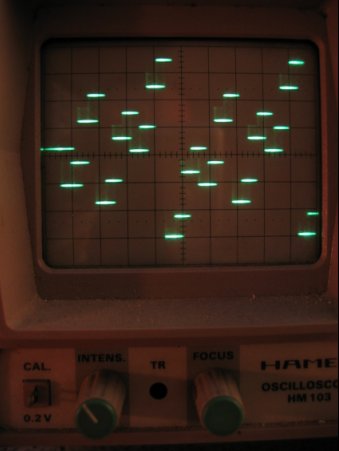
Staircase F/2 + F/4 + F/8
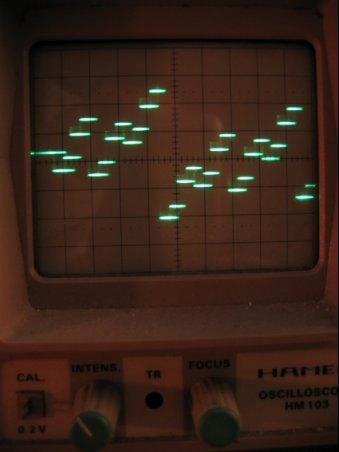
Staircase F/2 + F/4 + F/8 + F/16
Sound example: Demo: A short sequence, first part a square signl (F/4), second part as cluster of all sub octaves.
Reproduction hints:
None.